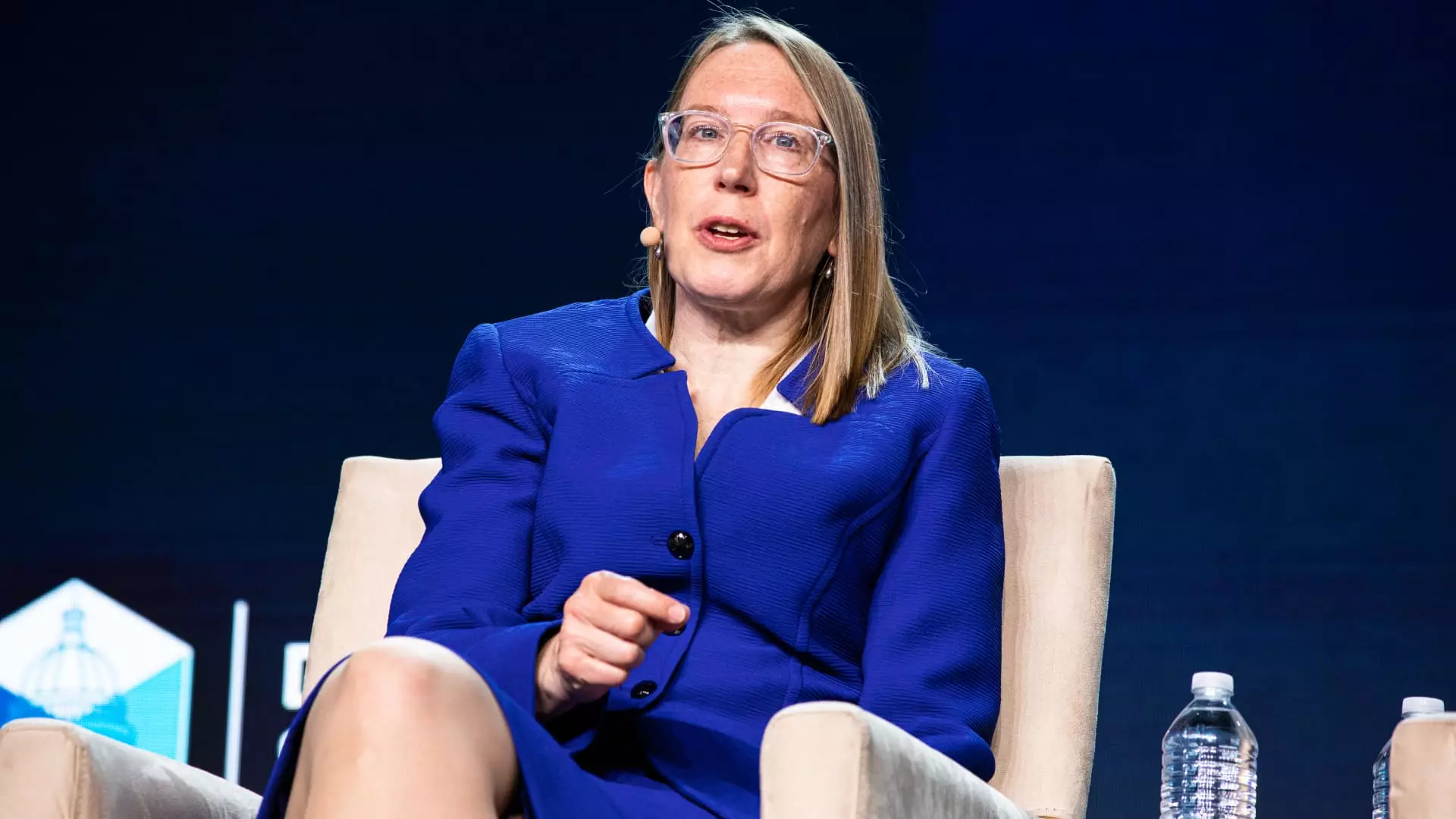The rise of cryptocurrency has often mirrored a modern-day gold rush, filled with excitement, opportunities, and substantial uncertainty. A recent turning point in this landscape, particularly concerning meme coins, has highlighted the shifting regulatory environment under the U.S. Securities and Exchange Commission (SEC). With the SEC stepping back from regulating these tokens, investors are left to navigate a complex territory that lacks clear guidance. As we plunge into this world shaped by speculative trading and social media influence, understanding the implications of regulatory inaction becomes crucial.
The Meme Coin Phenomenon
In February, the SEC announced it would not classify most meme coins as securities under federal law, effectively opting out of oversight for this volatile category. This decision unveiled a significant regulatory gap at a time when former President Donald Trump launched his own meme coin, dubbed $TRUMP. The euphoric launch propelled the token to a staggering $15 billion market cap in a matter of days, indicative of the speculative fervor that can accompany such assets. What is particularly striking is that mere weeks later, $TRUMP essentially collapsed, illustrating the ephemeral nature of value in the meme coin market.
Meme coins, often devoid of tangible value and any serious underlying business model, thrive on social interaction, investors’ sentiments, and speculation rather than the fundamentals that typically drive financial markets. This environment shapes an investment landscape that heavily favors well-timed promotional efforts over steady, traditional investments. Hester Peirce, a veteran SEC commissioner, voices concerns over a missed opportunity to clarify the SEC’s stance on meme coins, suggesting that an announcement could have mitigated unrealistic expectations among investors seeking safety in an inherently risky market.
A Political Quagmire
The intertwining of politics and cryptocurrency complicates our understanding of the environment surrounding these assets. Trump’s amplified presence in the crypto realm, alongside the SEC’s relaxed regulatory posture, raises questions about potential conflicts of interest. The $TRUMP token is significantly controlled by the Trump Organization and its affiliates, creating a scenario where the very essence of regulatory neutrality seems challenged. As lawmakers scrutinize these developments, the notion that personal affiliations could influence regulatory practices emerges as a pressing concern.
The erosion of regulatory standards under the current administration not only provides fertile ground for meme coin proliferation but also emboldens figures previously targeted by regulators, such as Binance’s Changpeng Zhao. Zhao’s revival and continued partnership with the Trump networks illustrate a deeper trend: political and financial ecosystems merging, driving both acceptance and resistance to industry oversight.
Market Responsibility: A Call for Investor Vigilance
The dramatic fluctuations in meme coin valuations underscore the need for investor vigilance and a healthy dose of skepticism. Peirce’s comments remind buyers to approach meme coins with caution, emphasizing a personal responsibility to understand potential risks. In an era where anyone with an internet connection can promote a crypto asset, it becomes increasingly important for participants to educate themselves about the implications of investing in such volatile assets.
Without regulatory oversight, the onus falls on investors to conduct due diligence and remain aware of the speculative nature of where their cash is flowing. With articles, social media platforms, and influencers often glorifying meme coins, the line between informed investment and blind speculation becomes increasingly blurred.
Impacts of Regulatory Changes on the Traditional Financial Sector
The SEC’s recent decisions also hold implications beyond just meme coins, signaling a broader shift in the regulatory framework surrounding crypto. In rescinding directives like Staff Accounting Bulletin 121, designed to deter traditional banks from engaging in crypto custody, the SEC opens the door for established financial institutions to enter the cryptocurrency space. This evolution may serve to legitimize certain aspects of crypto trading, aligning it more closely with traditional financial practices, but it also raises questions about investor safeguards.
As banks and major financial players seek entry into this volatile sphere, one must ponder whether their motivation stems more from opportunism than a genuine desire to enhance the stability and safety of the market. Clear guidelines from regulatory bodies will be essential in ensuring that these institutions are effectively held accountable, maintaining fidelity to the principles of investor protection amidst the ongoing cryptocurrency evolution.
A Future Unwritten
With a regulatory body not actively involved in the semantics of meme coins and an evolving financial landscape marked by influential partnerships and political ties, the cryptocurrency sector presents a perplexing tableau for current and prospective investors. Entering this domain requires more than just a willingness to invest; it necessitates a deep understanding of each asset’s context, influences, and the broader market dynamics at play. As meme coins and wider cryptocurrency ventures navigate this unregulated landscape, agility, informed decision-making, and perhaps a bit of foresight may become the most valuable assets an investor can possess.

